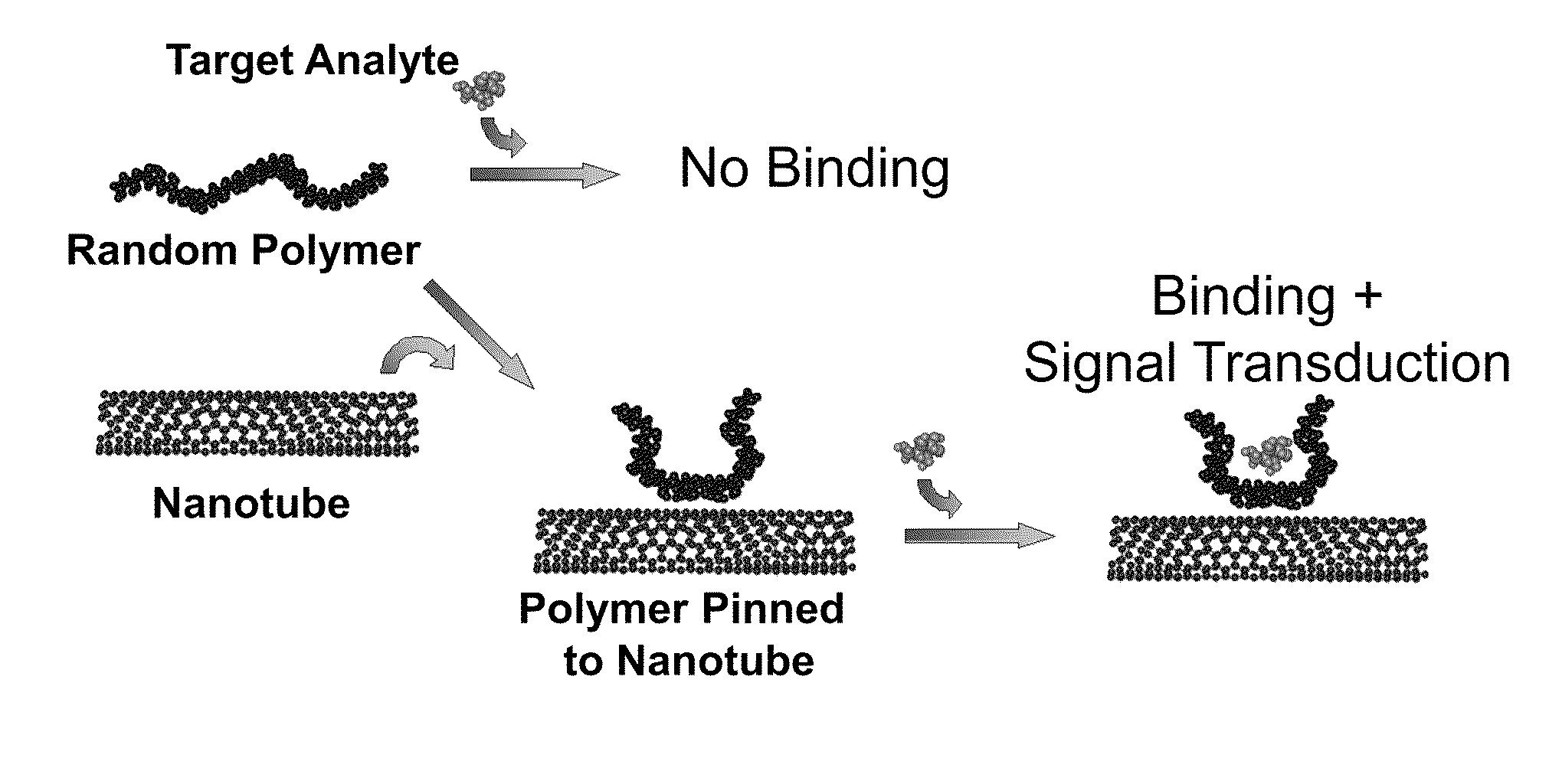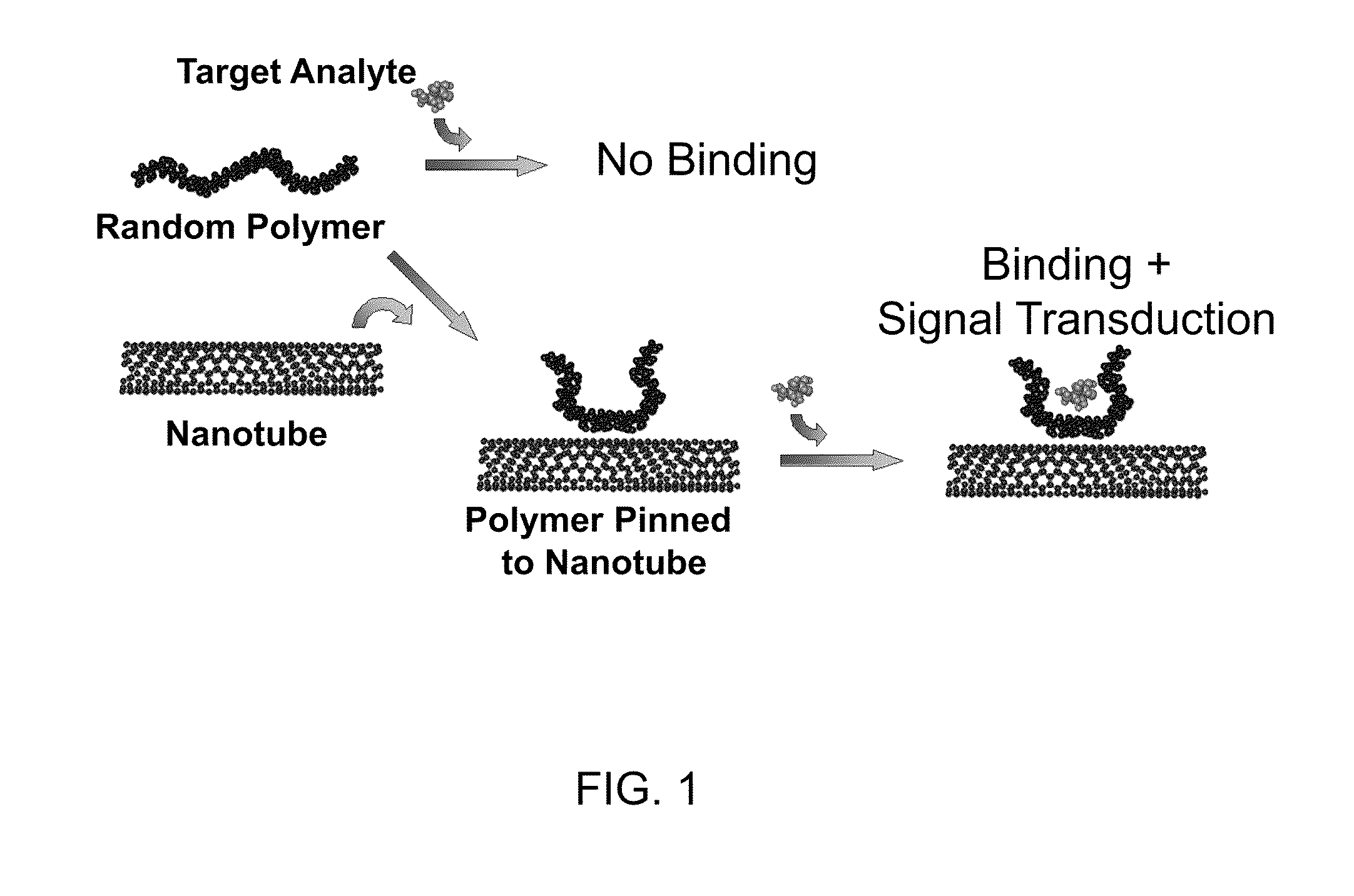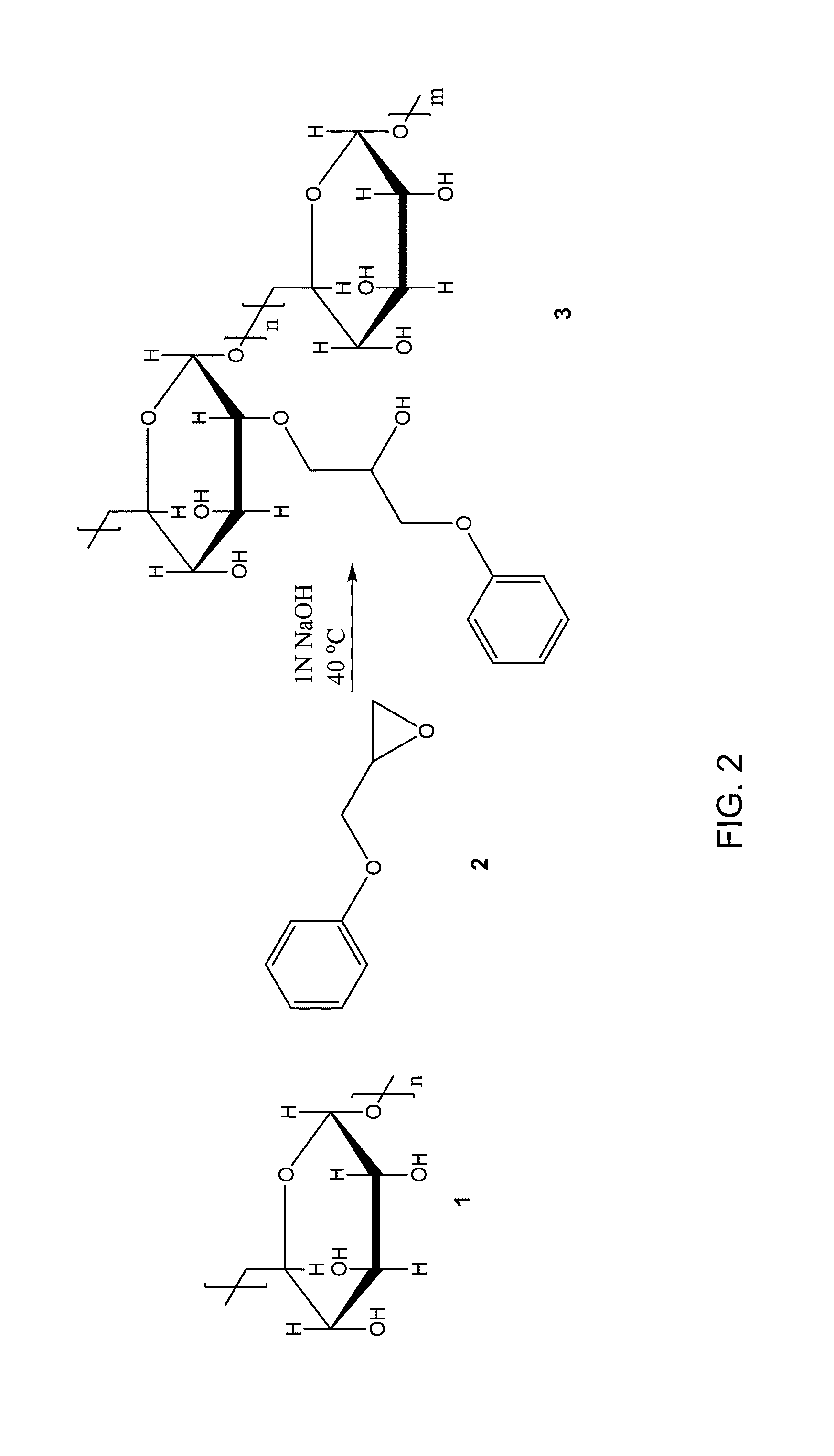Polymer-nanostructure composition for selective molecular recognition
- Summary
- Abstract
- Description
- Claims
- Application Information
AI Technical Summary
Benefits of technology
Problems solved by technology
Method used
Image
Examples
examples
Materials:
SWNTs were from the Rice University research reactor run 114 or were purchased from Nano-C. Sodium cholate (SC), sodium dodecyl sulfate (SDS), poly (vinyl alcohol) (PVA, 87-89% hydrolyzed), dextran from Leuconostoc mesenteroides (9 kD to 11 kD Mw), 1,2-epoxy-3-phenoxypropane, chloroacetic acid, 3-aminophenylboronic acid, N-(3-dimethyl-aminopropyl)-N′-ethylcarbodiimide hydrochloride (EDC), N-hydroxysuccinimide (NHS), dimethyl sulfoxide (DMSO), 3-aminopropyltriethoxysilane (APTES) and all tested analytes were purchased from Sigma Aldrich and used as received. 1,2-dipalmitoyl-sn-glycero-3-phosphoethanolamine-N-(lauroyl) (PL-DOD) was purchased from Avanti Polar Lipids Inc. Ultra pure nitric oxide (NO, 99.99%) gas was purchased from Airgas. The NO solution was prepared by bubbling pure NO gas through 1×Tris (20 mM, pH 7.3) that had been deoxygenated by bubbling argon through it for two hours. DNA oligonucleotides and peptides were purchased from Integrated DNA Technologies (IDT...
PUM
 Login to View More
Login to View More Abstract
Description
Claims
Application Information
 Login to View More
Login to View More - R&D
- Intellectual Property
- Life Sciences
- Materials
- Tech Scout
- Unparalleled Data Quality
- Higher Quality Content
- 60% Fewer Hallucinations
Browse by: Latest US Patents, China's latest patents, Technical Efficacy Thesaurus, Application Domain, Technology Topic, Popular Technical Reports.
© 2025 PatSnap. All rights reserved.Legal|Privacy policy|Modern Slavery Act Transparency Statement|Sitemap|About US| Contact US: help@patsnap.com



